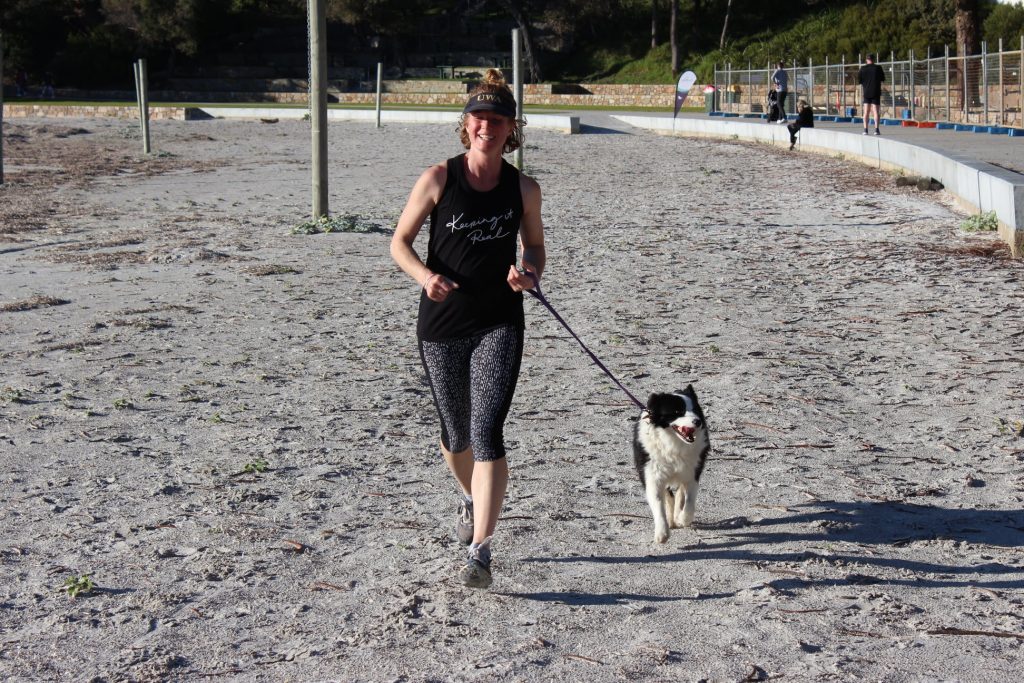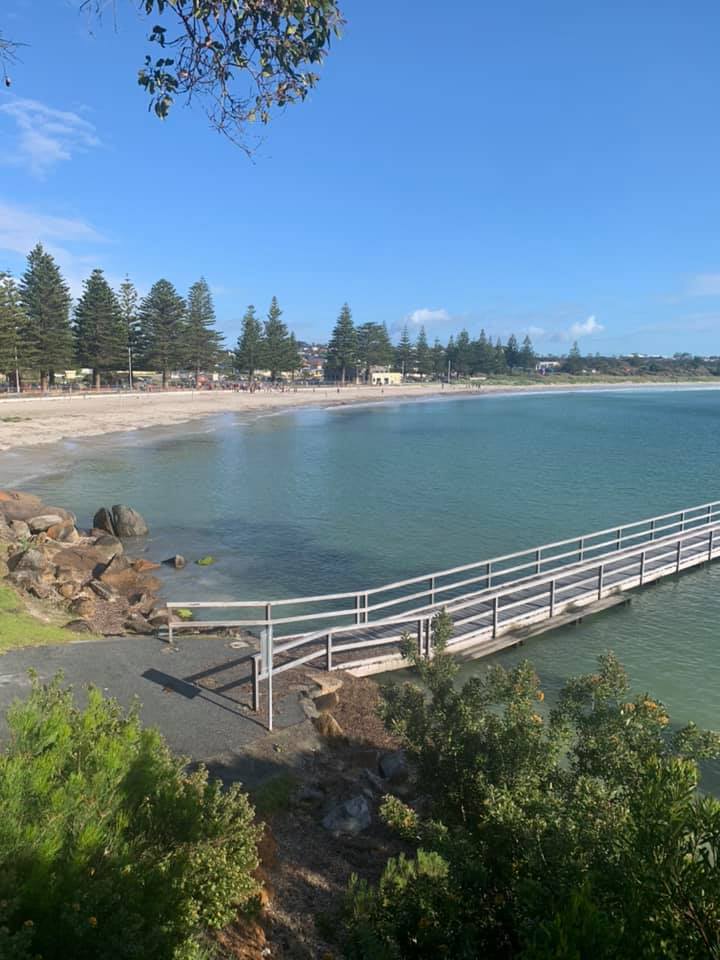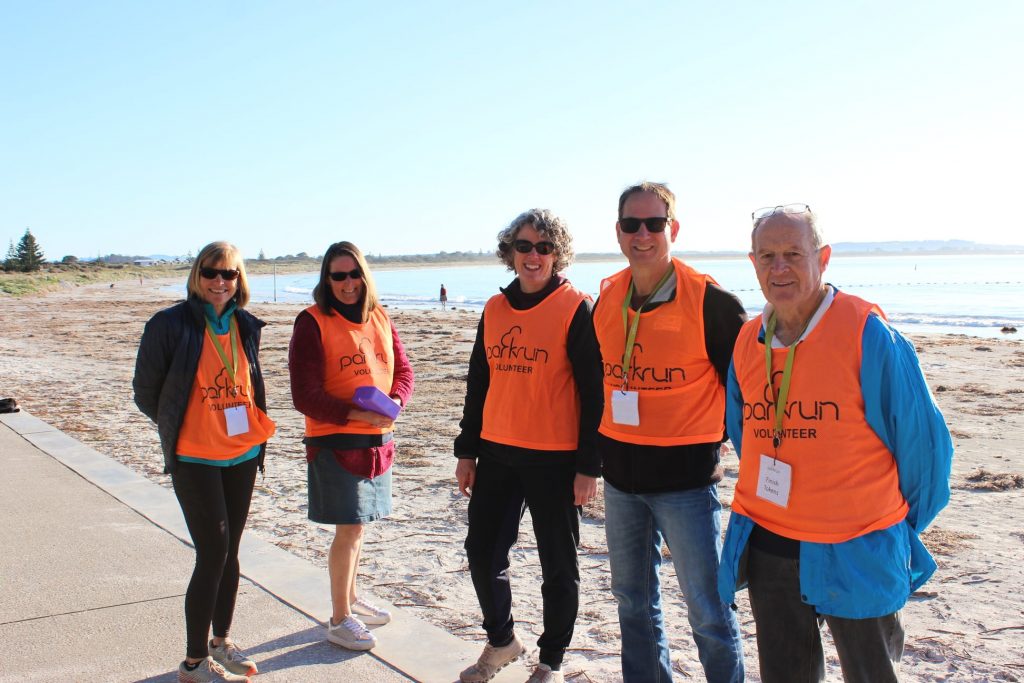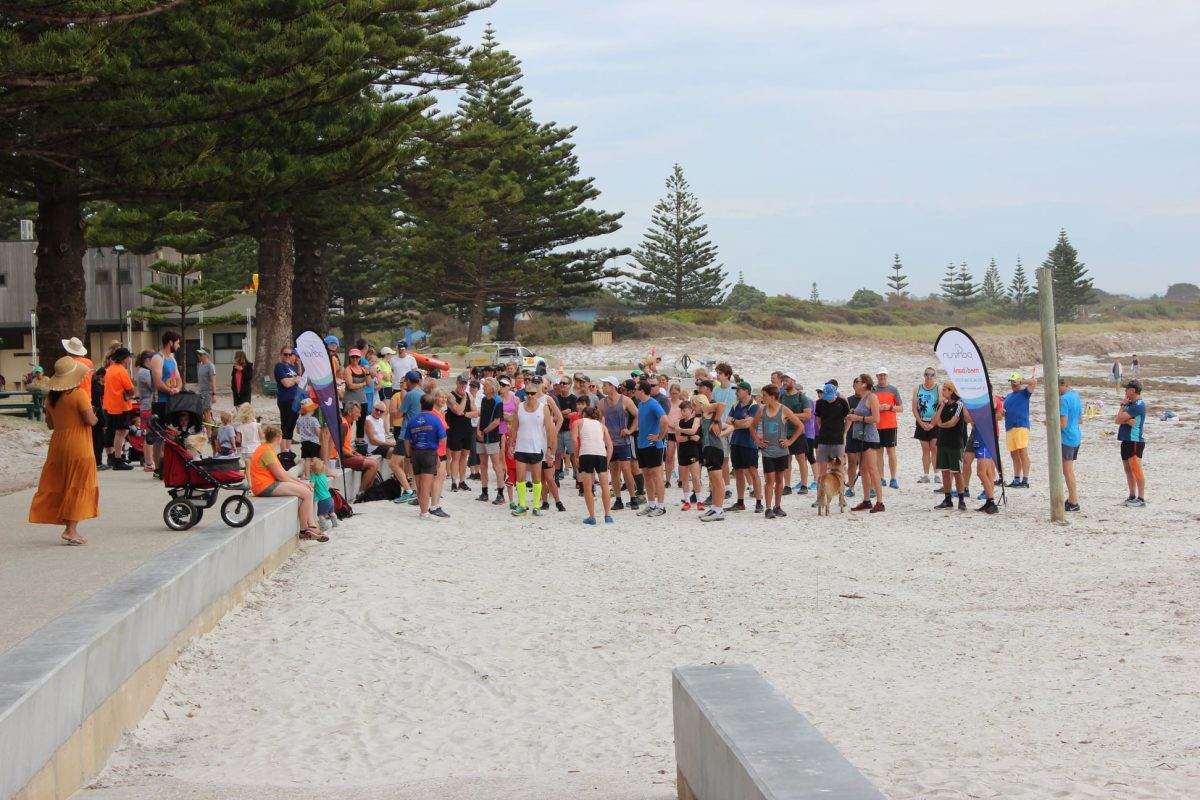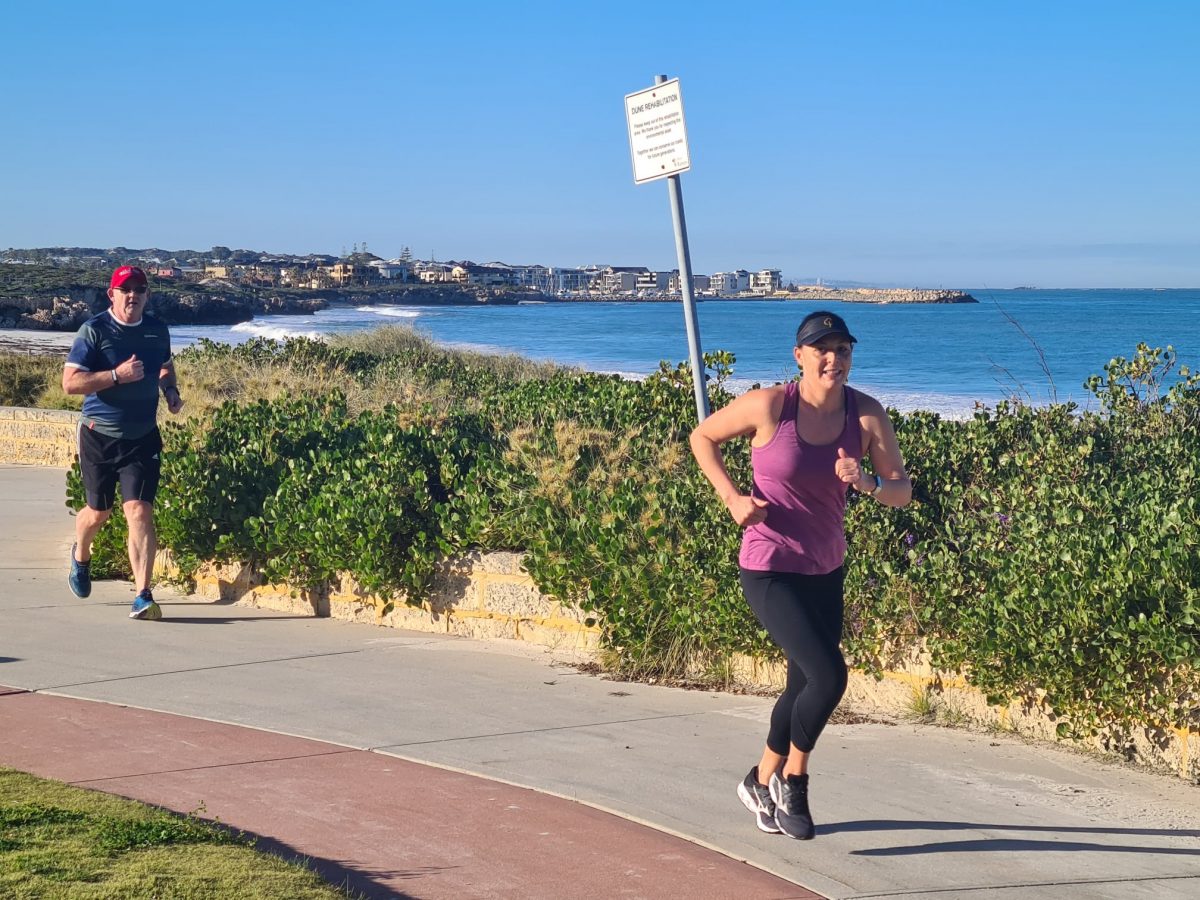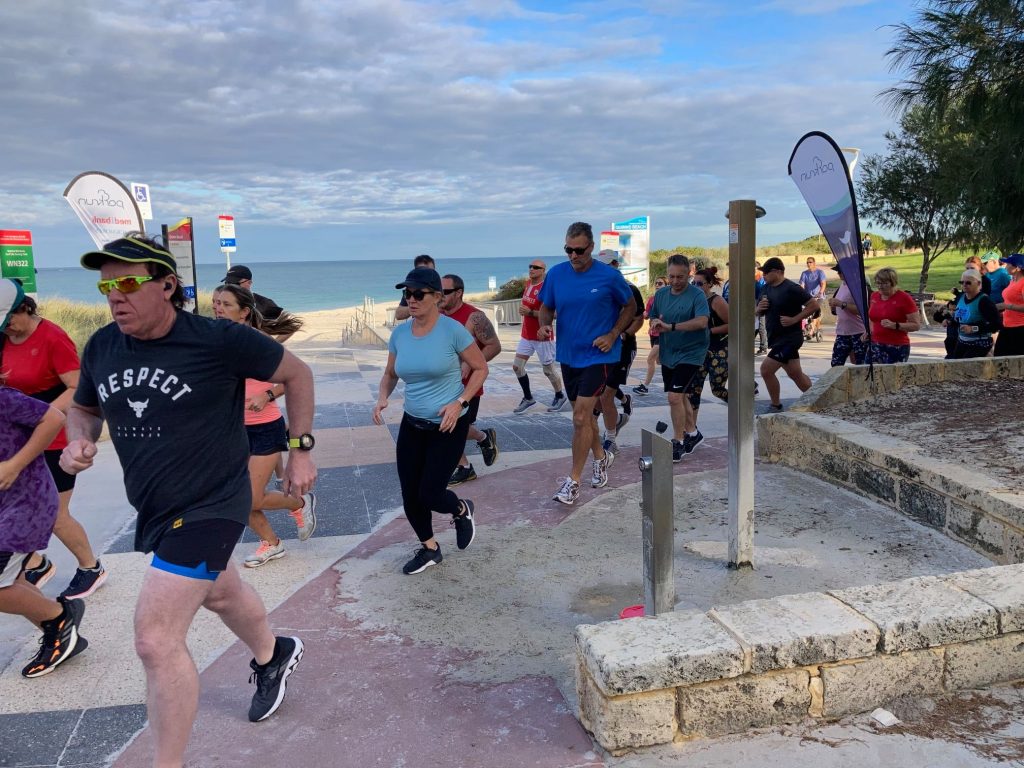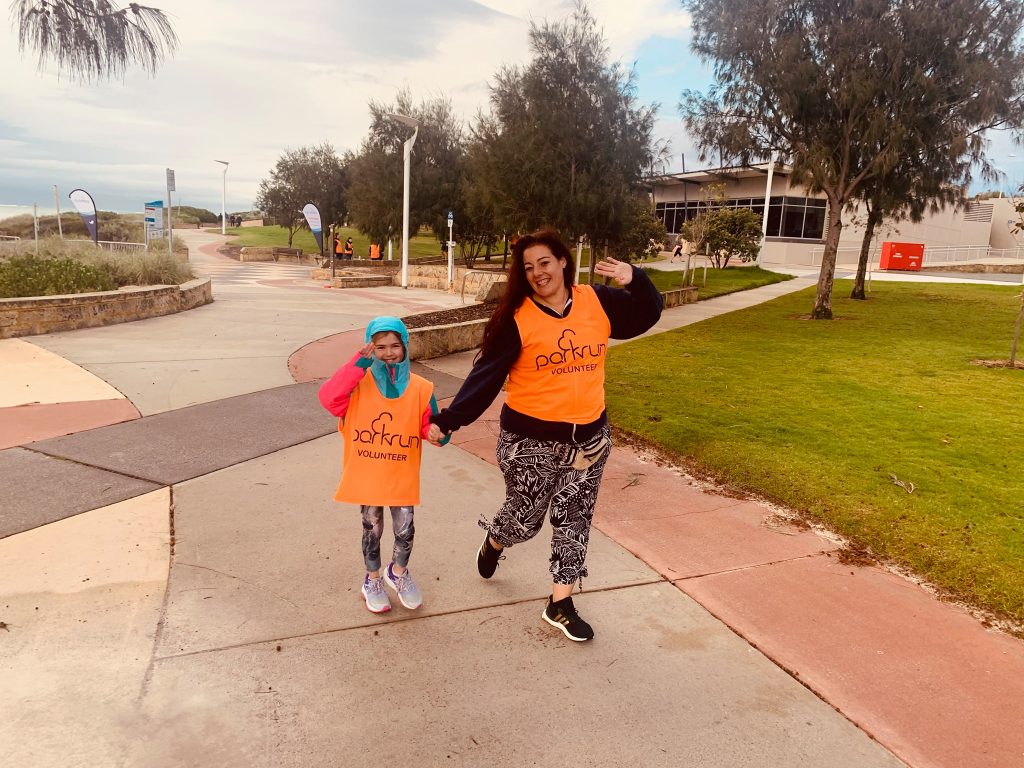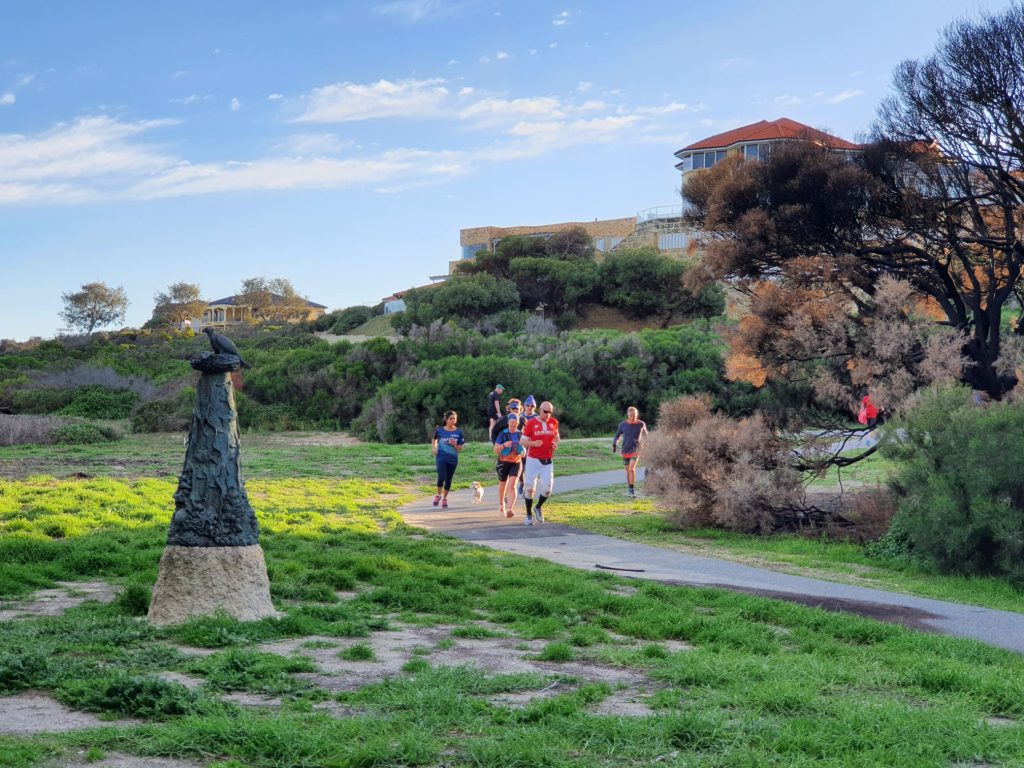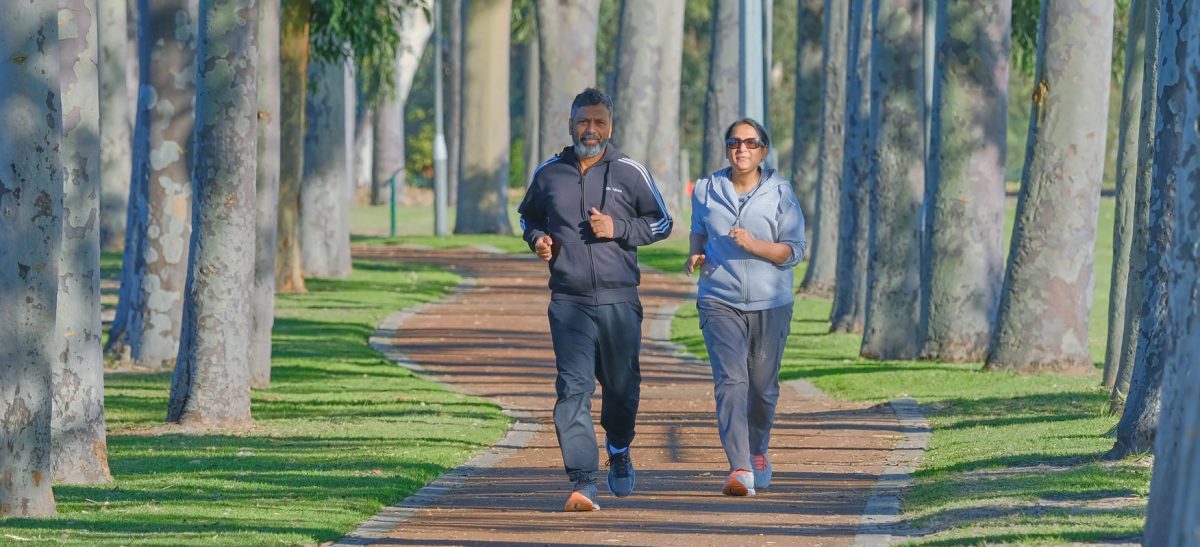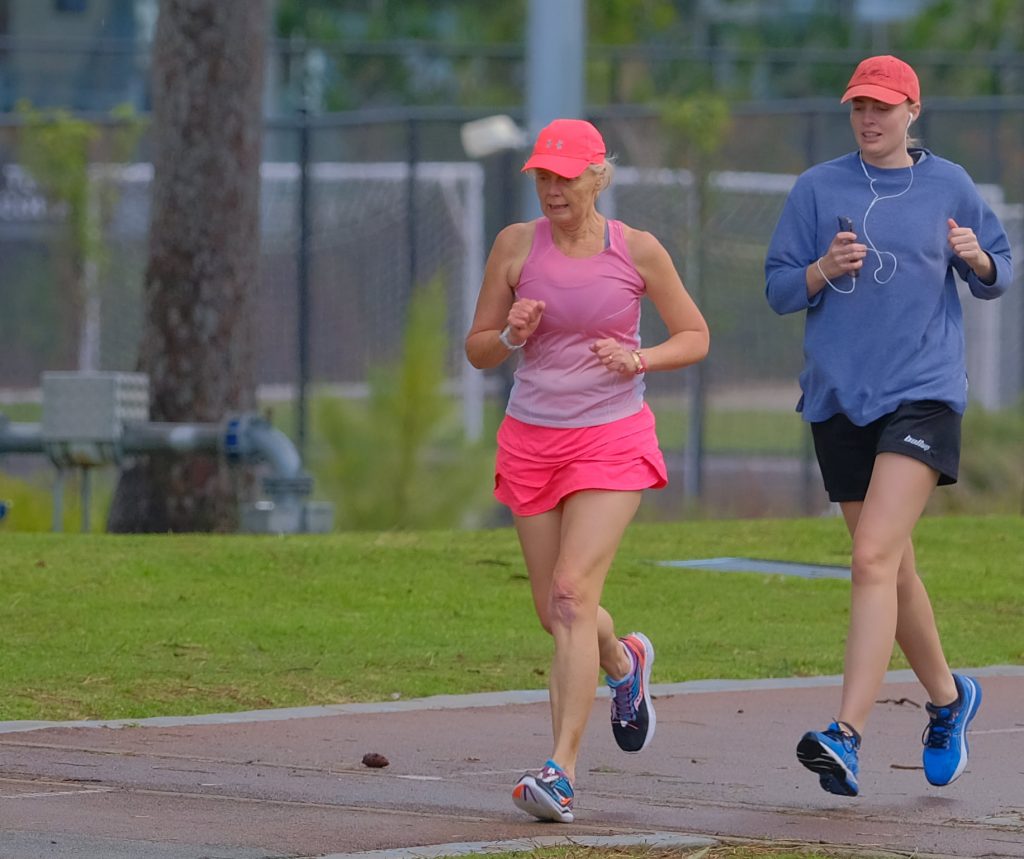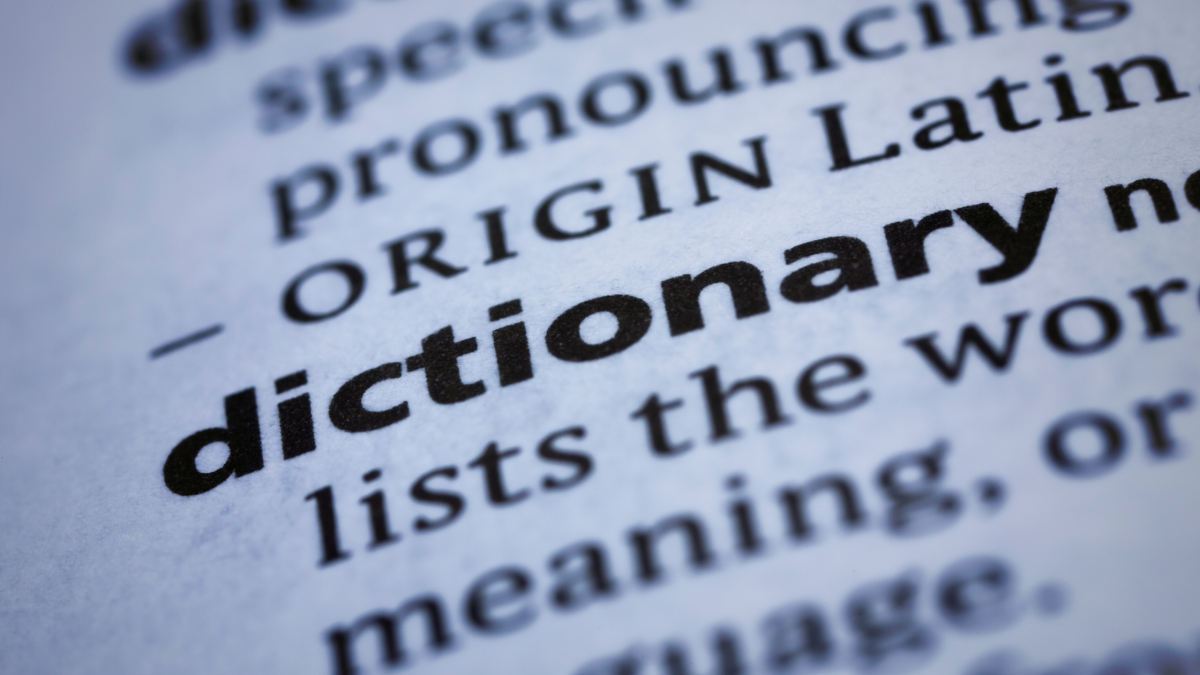What’s the origin/meaning of our parkrun names?
Thanks to Ian Kemp for compiling these.
If you spot a parkrun without a listing and you can help please get in touch at runswithabarcode@gmail.com.
Applecross
The suburb of Applecross was named by one of the early land grant owners, after the Applecross Peninsula on the NW coast of Scotland.
The Scots location is very isolated, and the name goes back about 1300 years, based on the Pictish name Aporcrosan, meaning a junction of the river Crosan.
Aveley
The suburb of Aveley was named in 2006, using a name for the area given by an early land grant owner, after the town of Aveley in Essex, England.
It in turn is a variation on the Saxon name Alvilia which is recorded in the Domesday Book from the early 1000’s AD.
Bayview Road
The parkrun is of course named for the seaward road north of Karratha where the parkrun happens.
The name was allocated in 2015, when the plan was developed to link Balmoral Road with Searipple Road, and approved in 2016.
The existing Balmoral Road took on the name of the new bit, but the name Searipple was retained for the eastern part following an objection from a local business.
The name Bayview was the second choice of the council, but was adopted after the first choice, Nikol Bay Road, was rejected by the state Geographical Names Board, who didn’t want two words to be used for some reason.
Bibra Lake
The name of Bibra Lake was adopted in 1967 based on the name of an early European Landholder Benedict von Bibra, who had bought land there in 1843.
Bibra’s name in turn is an aristocratic German family name which was first recorded in 1119. They had a lot of power and influence in what is now central Germany, but I don’t know why Benedict came to Australia.
Bunbury
Bunbury parkrun is of course named for the town, which was founded by Lieutenant Henry William St Pierre Bunbury, who opened up an overland route to the spot from Pinjarra in the early 1800’s – but he did not settle or live there.
Bunbury was from an aristocratic English family, and the name derives from a place in NW England, which was listed in the Norman Domesday book as Buna Burh (Castle of Buna).
Burswood Peninsula
Burswood was named by the first English landholder Henry Camfield (which also explains the name of the road and the pub adjacent to the course), after his father’s farm Burrswood, which was near Groombridge in Kent.
Calleya
Do you know the origin of this parkrun name? Email Alison runswithabarcode@gmail.com
Canning River
Canning River was named by Capt James Stirling, after a tour in 1827.
It was named for George Canning, the British Prime Minister at the time, who arranged the funds for Stirling’s expedition.
His father was from Ireland, so the name may have originated from the Irish “Cannan” meaning Wolf Cub. Of course the river already had a name, early French explorers named it Moreau, after one of their crew, and apart from that the Nyungar name is Djarlgarra.
Carine Glades
The name came from the Big and Small Carine Swamps that delineated the area, which was earlier part of Hamersley Estate – owned by the migrant Hamersley family.
Maybe one of them named the swamps, after someone with the French first (female) name Carine?
Champion Lakes
The name was made up in the year 2000, for the proposed water recreation centre based around Wright Lake in the City of Armadale.
The rowing & regatta centre in the Champion Lakes regional park was opened in 2007, and the name has also been used for the residential real estate area near the centre.
Claisebrook Cove
Claisebrook Cove parkrun, the first to be established in WA, starts on the site of the old East Perth Gasworks – this site and surrounding industrial areas were redeveloped as residential, commercial and parkland in the early 2000’s.
The name has morphed from the English name for the stream “Clause’s Brook”, bestowed in the 1827 tour up the river by Capt James Stirling. Frederick Clause was a naval surgeon who was present on Stirling’s tour, but his memory was lost as the name schlepped into Claise Brook in the mid 1800s.
Collie River Trail
In 1829, the Collie River was ‘discovered’ by the crew of the survey ship HMS Sulphur, which explored the area after bringing British Troops to the Swan River colony.
The river was named after the ship’s surgeon Dr Alexander Collie. The Collie River Trail was recently upgraded as part of a network of walking and cycling trails around Collie
Cottesloe
Governer Broome named Cottesloe in 1886, after Baron Cottesloe, aka Thomas Fremantle, the elder brother of Captain Charles Fremantle whose name will be familiar in WA.
The English name itself has been tracked back to 1086, being derived from the Saxon name for a place in Buckingham in England, Cota’s Lau (Cota’s Hill).
Dawesville
Dawesville is named after Louis Dawe, a South Australian tinsmith who initially worked at the Peel Inlet Preserving (Canning) Works.
In 1913 he built his own fish cannery and a homestead “Allandale” at what is now Dawesville.
Edinburgh Oval
Edinburgh Oval parkrun is named after the oval the course runs around.
The oval was named in honour of His Royal Highness, Prince Philip, the Duke of Edinburgh for his visit to the Western Australian Institute of Technology’s Bentley campus in March 1971.
The institution is now named Curtin University.
Garvey Park
Garvey Park was named after Thomas Laurence Garvey, Councillor from 1911 and later President of the Roads Board, who was responsible for the development of the park.
Previously it was known as Redcliffe Park then East Belmont Recreation Reserve. Despite being named Garvey Park in 1923, it was not officially gazetted until 1983.
Geographe Bay
The bay was named in 1801 by the French explorer Nicolas Baudin, after his ship Géographe (Geographer).
He arrived on a scientific expedition bankrolled by Napoleon Bonaparte, with two ships (the other being the Naturaliste (Naturalist)).
The expedition is responsible for a number of French place names scattered along the South West coast.
Hampton Oval
The port of Dampier was established in 1963 by the Hamersley Iron Pty Ltd.
The company town soon followed, named for the British seaman William Dampier, who arrived in Australia 80 years before Captain James Cook.
The sports oval is named such because it lies next to Hampton Harbour.
The name Hampton comes from Old English and means simply home settlement.
It is a common part of place names in England, and the link with Dampier is out there somewhere.
Heirisson Island (since closed)
The island was named after midshipman François-Antoine Boniface Heirisson, a crew member of the Naturaliste (see ‘Geographe Bay’). Members of Baudin’s expedition mapped the lower Swan river and gave the island its current name.
Homestead
In 1884 Thornlie Park, including the homestead, was established on land owned by the now-famous Walter Padbury. It was farmed by Frank and Amy James (Amy was Walter’s niece), whose work involved experimentation on what crops were right for the area. Some of the olive trees they planted survive in the park, along with the ruins of the homestead itself, which was destroyed by fire in the 1970s.
After that the whole area degraded and became choked with introduced weeds.
It was rehabilitated and made into a park starting in 2012.
The name Thornlie was used for the surrounding suburb and was originally bestowed by James as a re-use of the name of a business house in Madras (India) run by Frank’s grandfather.
Kadina Trail
Do you know the origin of this parkrun name? Email Alison runswithabarcode@gmail.com
Kalgoorlie-Boulder
The name of the first of the twin cities probably comes from the Wangkathaa word ‘Karlkurla’ which is the name of a plant called ‘silky pear’ in English. The name Boulder is carried over from an early mining lease called ‘the Great Boulder” because the mining lease contained a number of, yes boulders, containing small stringers of gold.
Kununurra
A number of ideas were put forward to name the new town built for the Ord river irrigation project, and in 1960 the name Kununurra was settled on, and the town was gazetted in 1961.
The originally spelling Cununurra was changed due to objections from the Postmaster General that it was too similar to other town names in Australia.
The name is probably derived from Goonoonoorrang (or Gananoorrang) which was the name used for that part of the Ord river in the Miriwoong language
Lake Joondalup
Perth’s largest freshwater lake nearly retains its Noongar name Doondalup, which means something like ‘glistening place’.
The city of Joondalup was named after the lake, when the authorities decided to develop a number of sub regional centres away from central Perth.
Manjimup
Manjimup is the Noongar word meaning ‘Manjin place’, the Manjim being a broad leafed plant with an edible root.
An early settler, J Mottram, named his property Manjimup House in the 1860s, and in 1863 the name of a local brook was officially recorded as Manjimup Brook by the surveyor Thomas Treen.
The townsite was officially gazetted in 1903 as Manjimupp, but changed back to Manjimup in 1911.
Margaret River
The river was supposedly named in 1831 by early settler John Bussel (founder of Busselton) after his step-second-cousin Margaret Whicher.
The name appears on a map of the region made in 1839. The first British settlers arrived in the 1850’s – including John Bussel’s brother Alfred and his wife Ellen, most engaging in farming and logging.
The townsite was established from 1919 to 1920, and the big historical turning points of course were the planting of the first commercial vines in 1966, and the establishment of a professional surfing competition in 1985.
Marina
The Batavia Coast Marina in Geraldton was opening on 25 Feb 1995, and was the result of planning and construction starting in 1987, after closure of the Westrail marshalling yards at the site.
From the start, the Marina was planned to be not just a mooring facility, but to include a motel, housing and retail.
The precinct also includes parkland and the Museum of Geraldton.
Maylands Peninsula
The name Maylands is thought to have been bestowed by Mephan Ferguson, who established a foundry in the area in 1898 to manufacture the water pipes for the Goldfields Pipeline.
He supposedly named the area after his aunt, or his daughter, each of which was named ‘May’.
The only problem is that the name appeared in print in 1896, in a poster advertising land for sale… before Mephan bought it.
So that theory is probably wrong and we need to look to the Tranby family who held the area from 1830.
The name probably has no connection to the original Noongar name of Wu-rut.
Moora
This is undoubtedly a Noongar name relating to the area, but the meaning is in doubt.
Some say it was the name of a nearby well, others that it derives from Moora-Moora meaning ‘good spirit’, and yet others that the name originally meant ‘grandparent’.
Perhaps a grandparent can be a good spirit, and may also be found near a good source of water, too.
Mount Clarence
This well-known memorial-bearing mountain in Albany was named after the British Duke of Clarence, who later became King William IV.
It has recently been officially ‘joint named’ with its original Noongar name Corndarup, meaning ‘place of red berries’.
The English name may have been bestowed by George Vancouver in 1791, or by Matthew Flinders in 1801. The name is based on land around the English town of Clare, in Suffolk.
Mount Helena
This area was once known as White’s Mill, after the White family who built a sawmill in 1882, then later Lion Mill, before being renamed to Mount Helena in 1924.
The name was dreamt up by the Progress Association, based on it having a hill and being near the Helena River.
The river is thought to have been named by Governer Stirling during his 1829 tour, after Helena Dance, the wife of the captain of HMS Sulphur, William Dance (see Collie River Trail parkrun).
Mundy Regional
The name commemorates Mundy (sometimes written ‘Munday’), a man who became an important negotiator for the Whadjuk community.
Mundy was leader of the Beelu aboriginal people at the time of European settlement, a group who used the area as a winter camp site.
The park was established in 1957 as Kalamunda Regional Park, and was given its current name in 2008. The notoriously hilly parkrun started in 2019.
Perry Lakes
The name of the lakes recalls Joseph Perry, who was born in Westminster, London in 1837 and came to Australia in 1842 with his parents and two younger brothers, William and “Cappy”.
He became known as Perth’s “first cowboy”, responsible for managing the City’s cow herds which he grazed between Mount Eliza (Kings Park), Dyson’s Swamp (Shenton Park) and the Limekiln’s Estate at City Beach.
In 1879 he purchased the Limekilns Estate, which included Bold Park and surrounding land, including Perry Lakes.
The property included a vineyard, a slaughter house and horse breaking and stock dealing facilities near the lake.
Port Hedland
Marapikurrinya was officially renamed Port Hedland in 1896, named for the Swedish-born Peter Hedland, who first proposed the area as the site of a port back in 1863.
The port was first developed in the 1890’s, and was significantly improved in 1966 to ship iron ore.
Originally named Lars Peter Hedlund, Peter emigrated to Australia in the 1850s, and made a number of trips to the North West in the boat Mystery that he had built at Point Walter near Fremantle.
Before his death in 1881, he fathered 11 children with his wife Ellen Adams.
Quinns Rocks
In 1867 Assistant Surveyor James Cowle recorded an offshore reef and decided to name it after Robert Quin, his predecessor who had carried out early surveys of parts of WA near Perth.
In 1925 the Wanneroo Road Board added an ‘n’ when they named the area “Quinns Rocks” while planning a road to that part of the coast.
Rockingham
In May 1830, three ships arrived in WA, chartered by Thomas Peel to bring settlers to the colony.
The Hooghly and the Gilmore made it to port, but the Rockingham was blown ashore and ultimately abandoned.
During attempts to refloat the ship, the would-be settlers camped ashore and supposedly named their tent city Rockingham Town.
The name became official with the government survey 1847. Some years later it became the site of a timber port, and thrived until the development of Fremantle Inner Harbour and a rail connection to the south west.
Shelley
Shelley was approved as a separate suburb in the mid 1960s. It is believed the name refers to shells found on the shores of the Canning River nearby.
Shipwreck
This is possibly the only parkrun in WA named after a kiddies’ playground! Shipwreck park was named for the large adventure playground in the middle.
The park and the playground were integral parts of the Stockland land development of Sienna Wood in the late 2010s.
Around that time the developers realised that they needed to include ready-made facilities for young families to make their developments more marketable and attractive to customers.
Wanneroo
This is a Noongar name meaning something like ‘place of the digging stick’.
Prior to European settlement there were around 60 families living from the natural resources of the lakes in the area.
The land was parcelled up by surveyors in the early 1800s. In 1844 John Smithies established a disastrous farm funded by the Wesleyan Mission Society, to be worked by aboriginal people.
A town site was gazetted in 1907 and the Yellagonga Regional Park which contains the parkrun(and Lake Joondalup parkrun) was established in 1989.
Whitfords Nodes
Whitford was first named in 1976 as an electoral district for WA state elections, and was first used in the 1977 election for the legislative assembly.
The district was later subdivided but the name lives on in a number of local businesses.
The ‘nodes’ refer to the dunes which participants in parkrun will be familiar with.
Woodbridge Riverside
Woodbridge was the name of a farm established in what was then part of Midland, in 1830, by Captain James Stirling.
He had a small house built there but spent little time at the farm, and leased it when he permanently left the colony at end of his stint as governor in 1839.
The farm was named after Woodbridge near Guildford in Surrey (England), the birthplace of his wife, Ellen Mangles.
Yokine
The name is a Noongar word for dingo and was named as a possibly more euphonious counter to ‘Dog Swamp’ nearby.
The original European land grant in 1840 gave the land to T. Walters, but it remained undeveloped and came into the ownership of Western Australian Golf Ltd.
Subdivision and settlement happened in the late 1940s, and the area was completely built out by the 1970s.
Fortunately the Yokine reserve was retained and is home to a number of sports organisations including parkrun.
